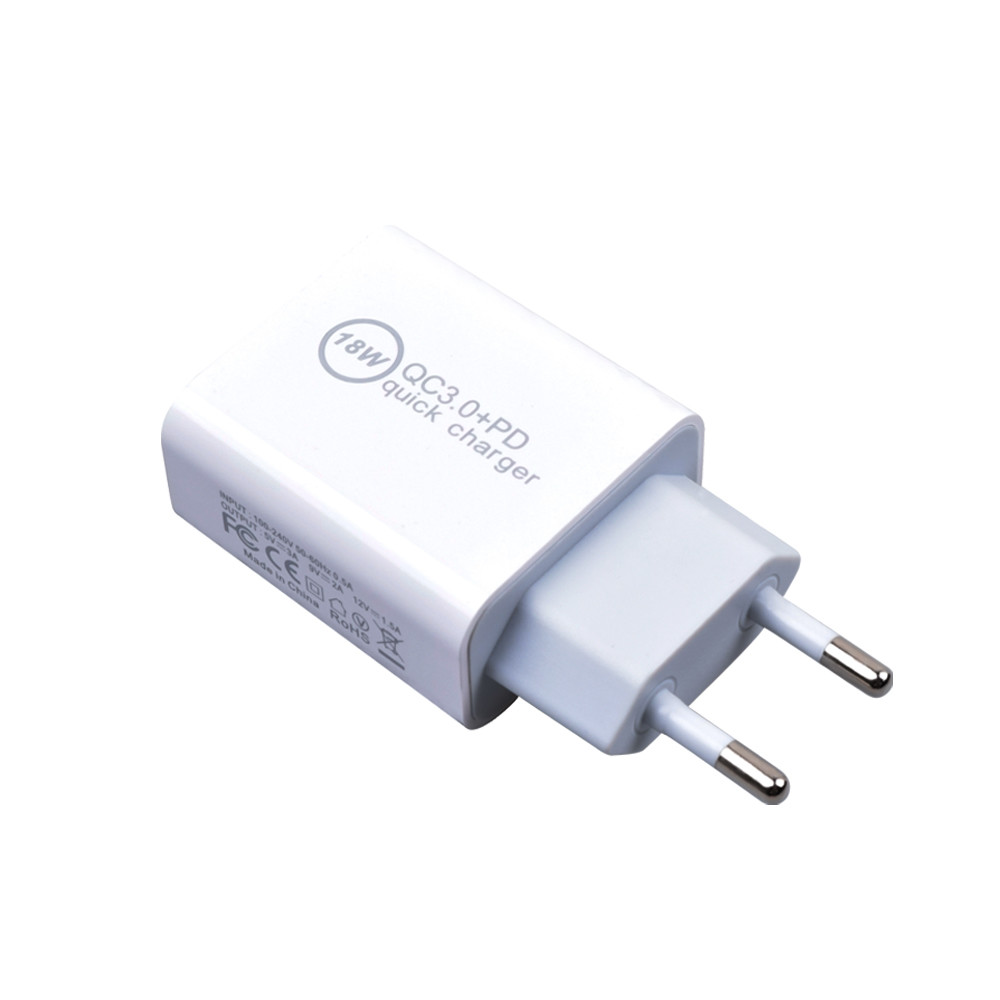3. Different Fast charging protocol in fast chargers
1. QC Protocol
Protocol 1.0 was released in 2013, with a maximum charging power of 10W (5V2A).
QC2.0 Protocol In 2014, Qualcomm released the 2.0 protocol. It supports 5/9/12V fixed voltage, up to 24W (12V/2A), and the maximum current is 2A.
QC3.0 Protocol In 2016, Qualcomm released the 3.0 protocol, which is backward compatible with the 2.0 protocol, and supports a maximum charging power of 36W. Support 3.6-12V fluctuating voltage, up to 36W (12V/3A). QC4.0 Protocol In 2017, Qualcomm released a 4.0 protocol to support 3.6-20V fluctuating voltage, up to 100W (20V/5A),
QC3+,On April 28, 2020, Qualcomm released the QC3+protocol, with a maximum of 20V/3A, that is, 60W power. QC3+is backward compatible with QC2.0/3.0 devices.
QC5.0 in 2020, Qualcomm released a 5.0 protocol, which officially popularized 100W fast charging, and greatly improved the charging power of devices by using the dual impact and triple impact technologies. 5.0 is also compatible with 4.0/4.0+protocols.
It can be seen that the most obvious progress of each upgrade of QC protocol is the increase of charging power. In addition, there must be other aspects of optimization, but due to the limited space, it will not be expanded. Compatibility: QC3.0 is compatible with QC2.0 and 1.0QC4.0 compatible with PD protocols, but not QC2.0/3.0QC4.0+supports PD protocols, QC3.0 and QC2.0.
2. PD Protocol
PD (Power Deliver) protocol is the USB charging standard and technology formulated by the USB IF Association. It is one of the mainstream fast charging protocols at present, and its maximum power supply can reach 100W.
USB PD protocol (hereinafter referred to as PD protocol) is a fast charging protocol based on Type-C interface. The Type-C interface supports up to 5V/3A by default, but after the PD protocol is implemented, the output power can support up to 100W.
4. Future of fast charging Protocol
Is it possible to unify the charging charging agreement?
Supporters and opponents of this issue have their own reasons. Some people support the unification of the fast charging agreement, because in this way, when purchasing a charging head and a charging bank, you do not need to bother to look at various fast charging agreements, or you can not buy the original charging bank. Other brands can also be considered, and you can choose products with lower prices. Some people think that the fast charging agreement cannot be unified or disclosed for the time being, because the private fast charging agreement is independently developed by the brand, which costs manpower and money. If it is not disclosed, users can only buy the original wall adatper
, and can also obtain more benefits, so it will certainly not be disclosed directly. As far as it is concerned, if the fast charging agreement is to be unified, it will have to wait slowly.
Post time: Nov-03-2022





